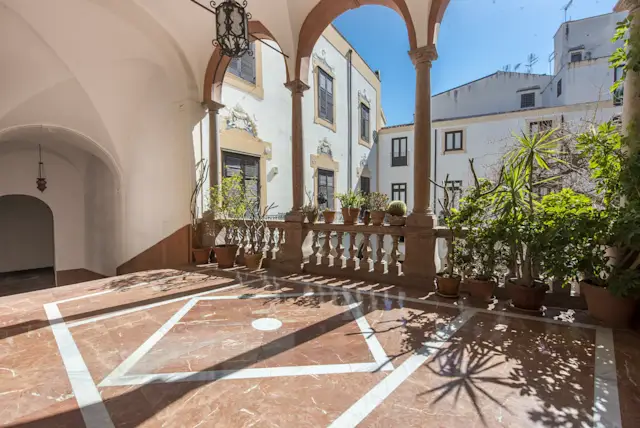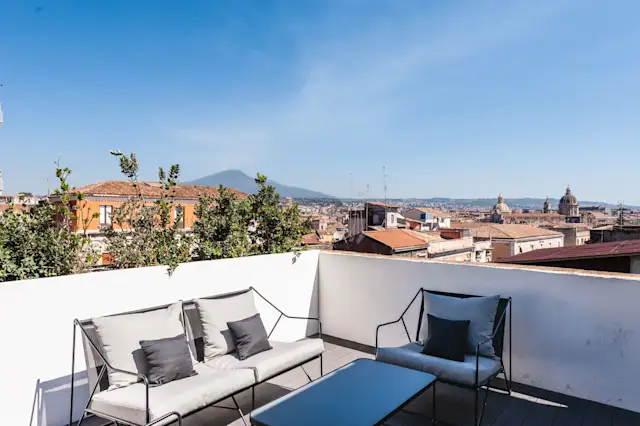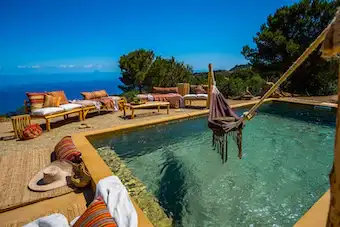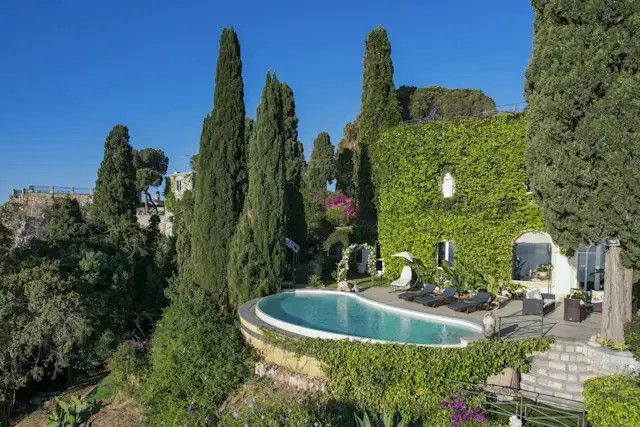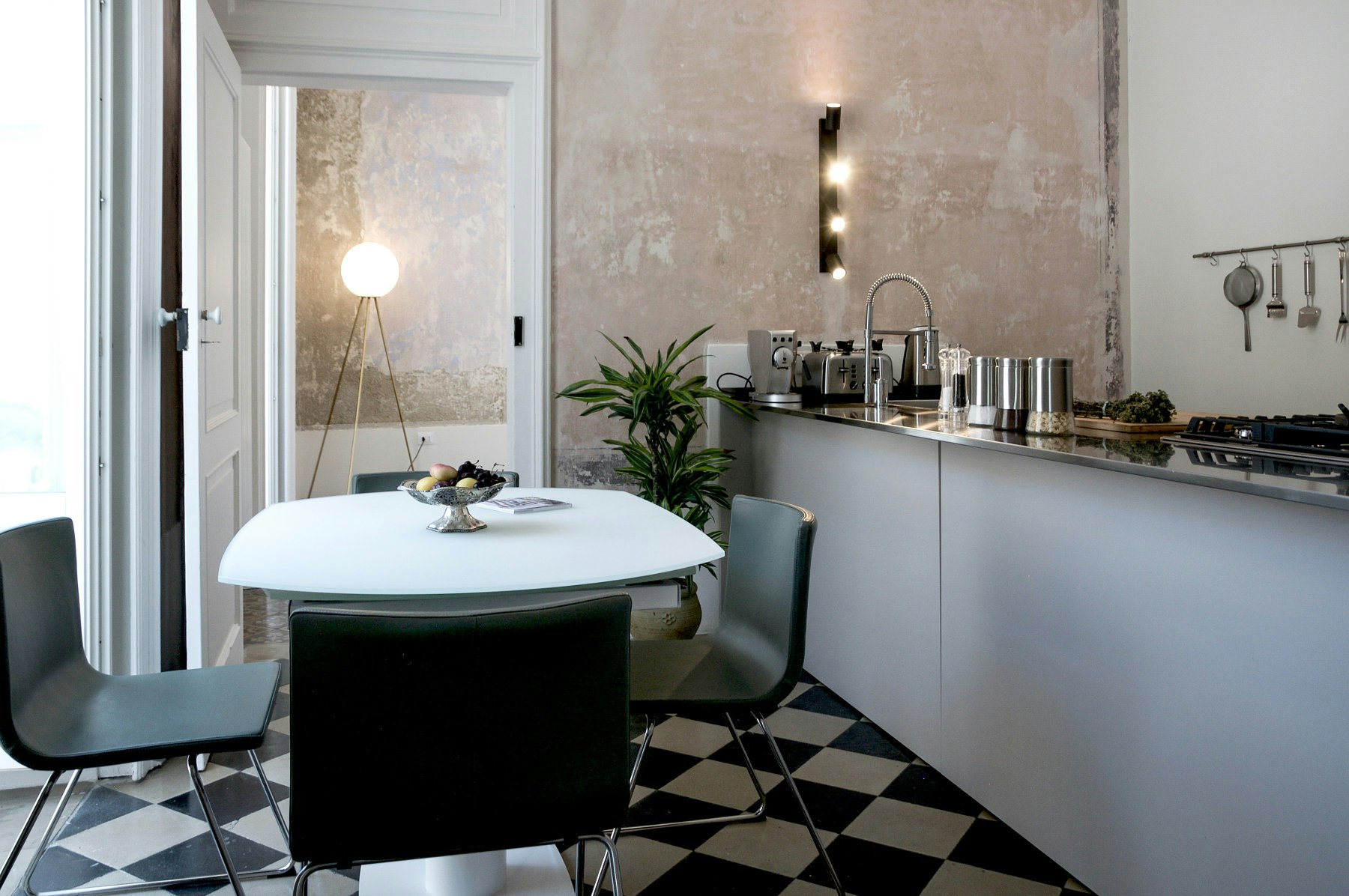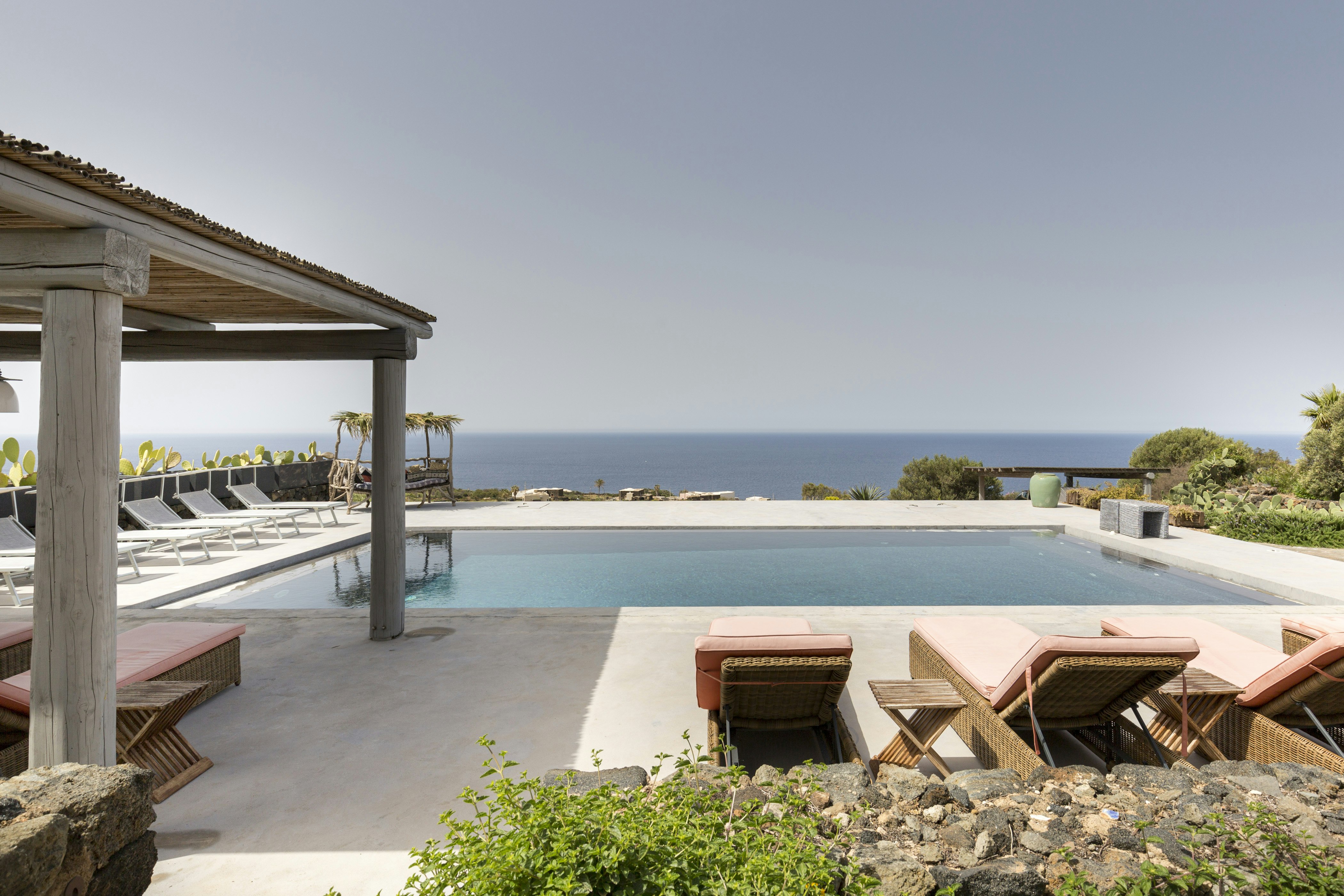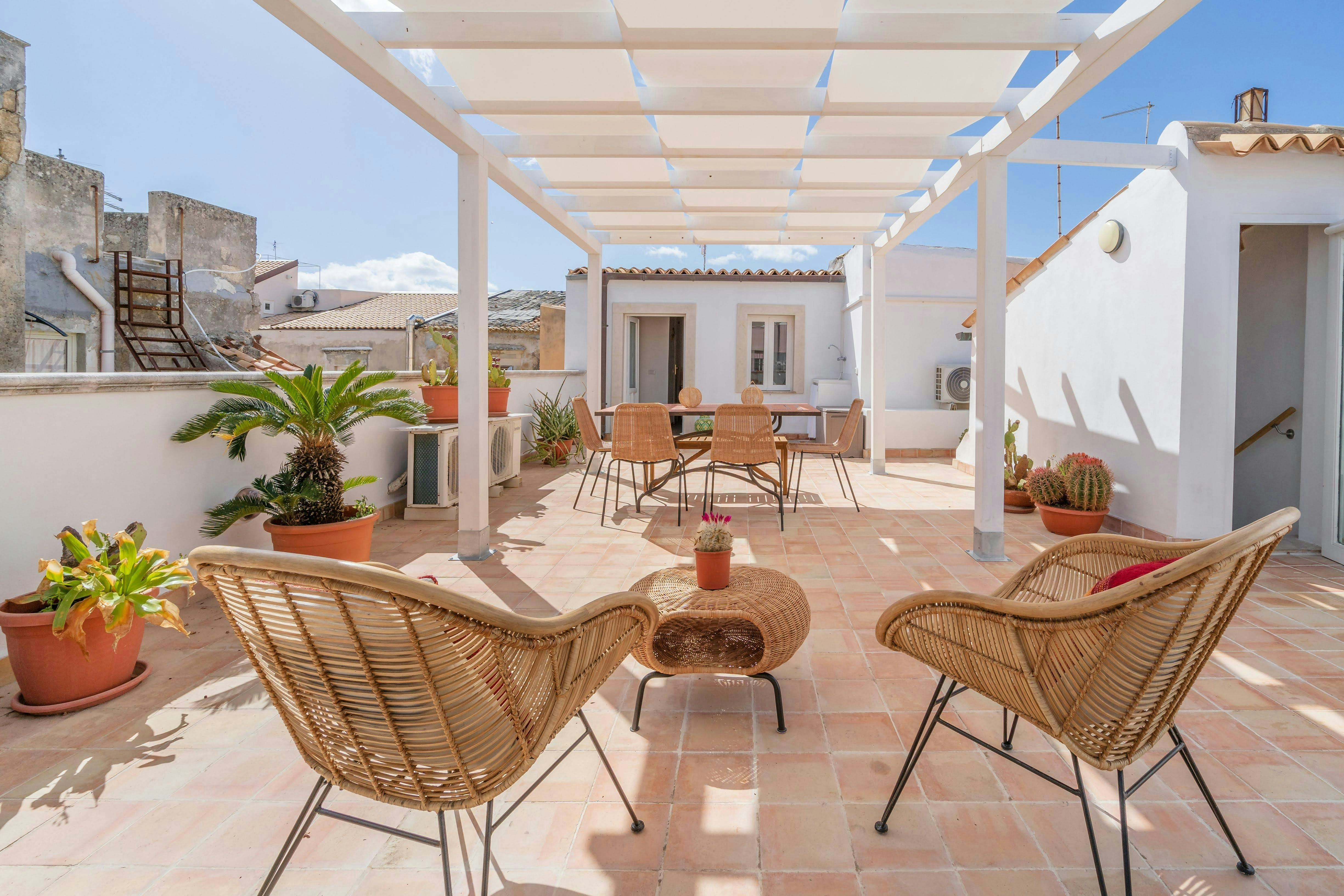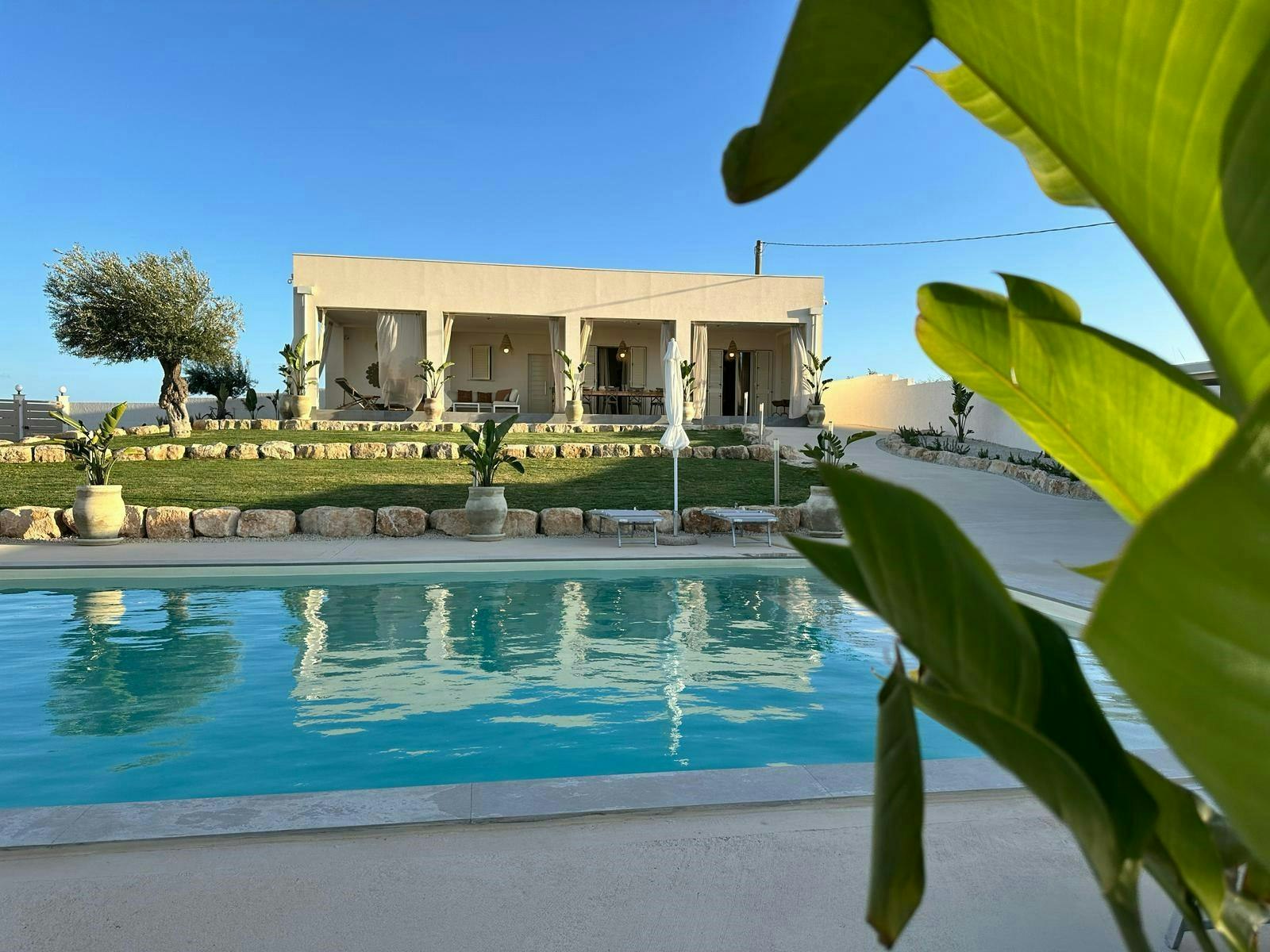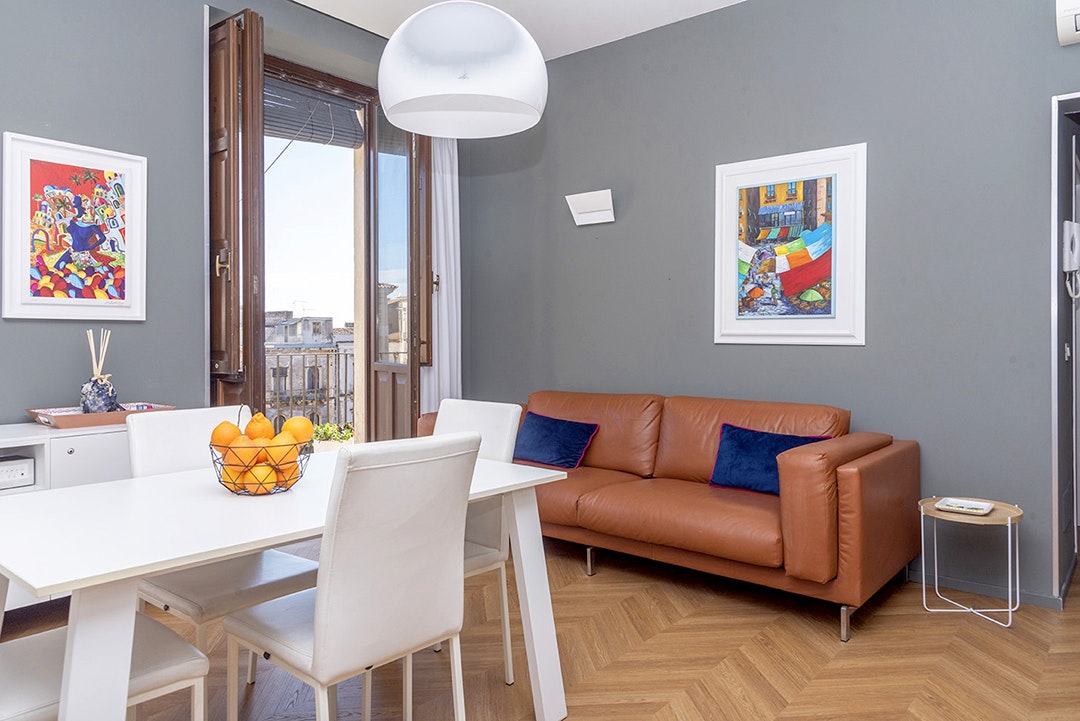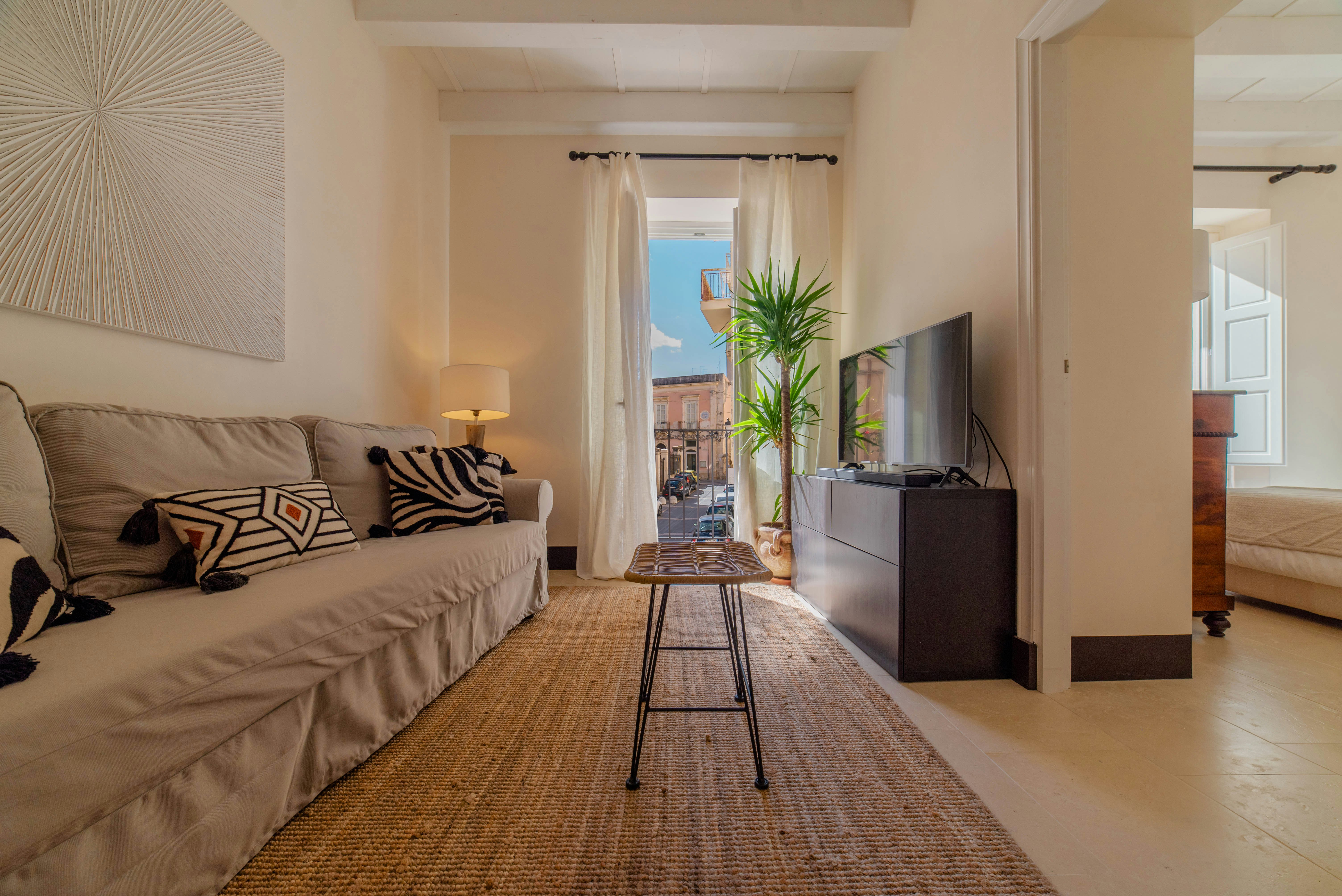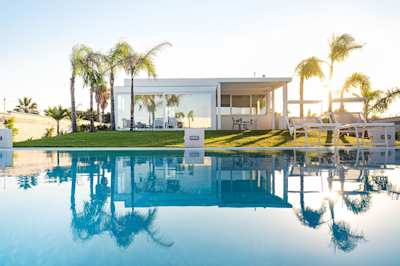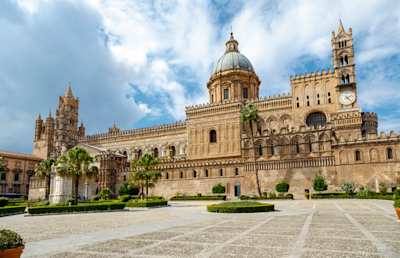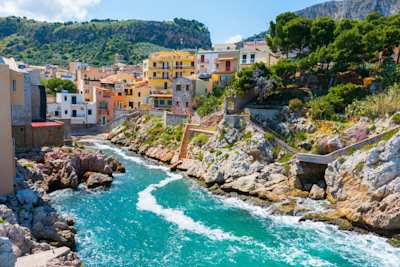La Dolce Vita: Where to Stay in Sicily For a Taste of The Sweet Life
From thrilling cities to seaside towns and breathtaking nature, Sicily is the ultimate island escape
~
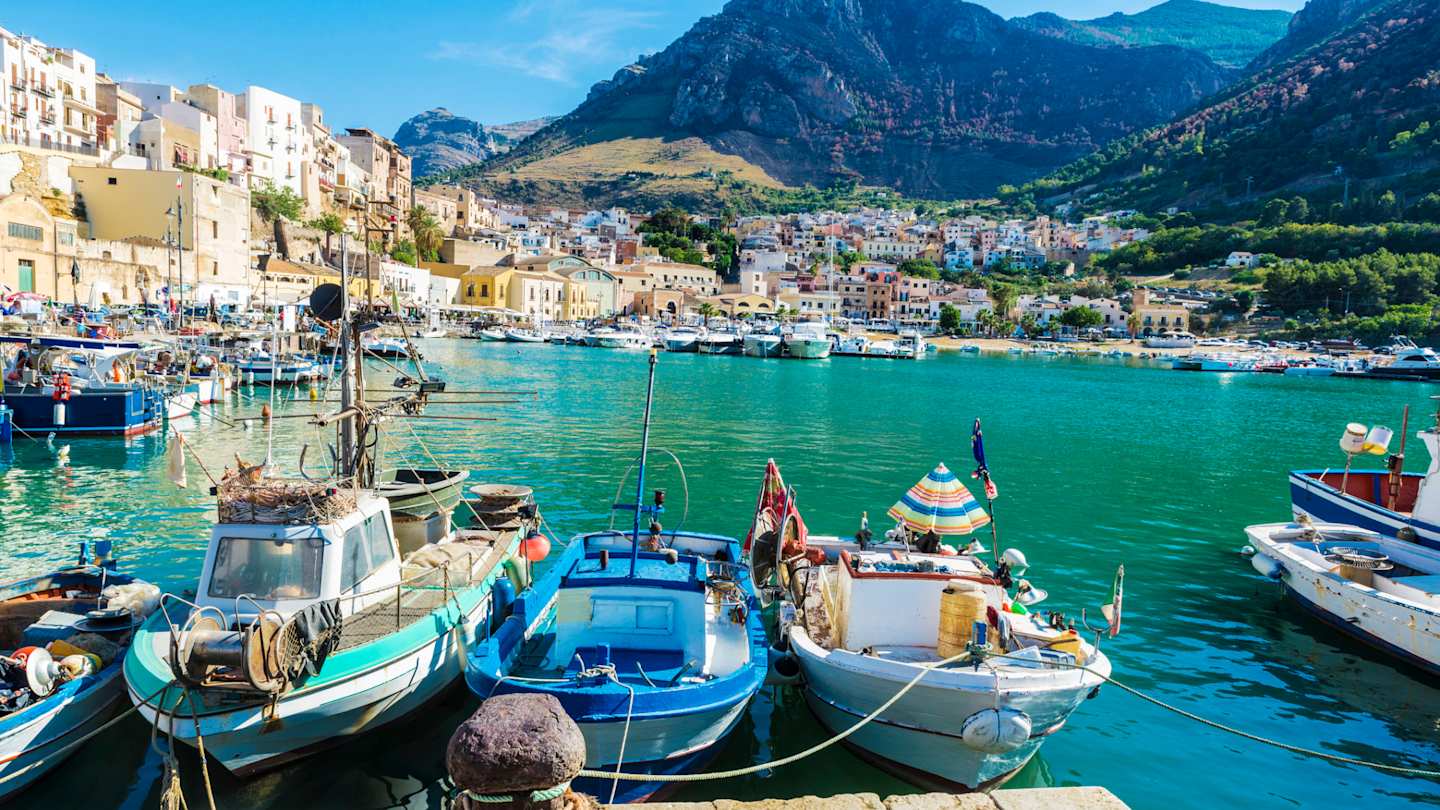
Just off the toe of Italy’s boot, Sicily is a dreamy destination with a wealth of beaches, natural landscapes, history, culture and, of course, delicious cuisine. With so much to see and do, you may be wondering where to stay so that you don’t miss anything the island offers. Luckily, the travel experts at Plum Guide are very clued up on Sicily and know all the best areas to visit. Whether you’re seeking a beach getaway, a cultural experience or an adventure in the great outdoors, take a look at our comprehensive guide to where to stay in Sicily.
Palermo
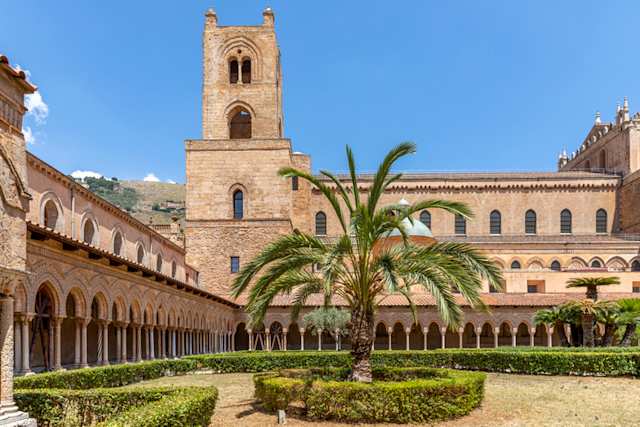
The Monreale Cathedral in the Metropolitan City of Palermo
No trip to Sicily would be complete without a stay in its wonderful capital. Palermo has everything a good city should have – a rich cultural heritage, fascinating history and a vibrant atmosphere. The best way to take it all in is to explore on foot, as you can take your time strolling the maze of old streets lined with romantic buildings and medieval churches. Architecture buffs will want to bring their camera as Palermo offers a delightful mix of architectural styles, including Norman, Arab, Byzantine and Baroque buildings. Some of the most remarkable ones include the 12th-century cathedral, the Norman Palace and the accompanying Cappella Palatina with its exquisite Byzantine mosaics.
Meanwhile, gourmands will be happy to hear that Palermo is widely regarded as home to Italy’s best street food. To test these claims, spend the day exploring the city’s buzzing markets. Ballarò Market is at the heart of the historic centre and is one of the oldest and most well-known in Palermo – pick up everything from fresh produce to spices and meats. Vucciria Market is another historic institution famed for its street food stalls. Be sure to try traditional dishes like panelle (chickpea fritters made from chickpea flour, water and spices), arancini (a deep-fried rice ball filled with ragu sauce or beef, ham, peas and cheese) and crocche (deep-fried potato fritters).
Sightseeing can be tiring, but the good news is that Palermo has plenty of beautiful public squares to catch your breath. Sit around the splendid fountain at Piazza Pretoria, or make a local and hang out at Piazza Politeama with its shops, cafes and theatres. Speaking of theatres, the Massimo Theatre is the largest in Italy and a must-visit for culture vultures looking to immerse themselves in a night of Sicilian opera.
Catania
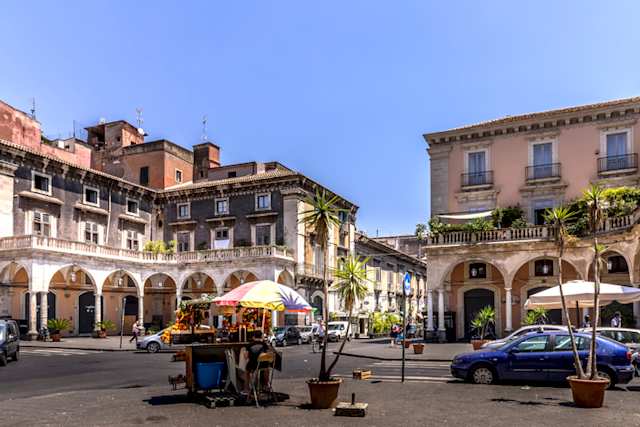
Cars by the food market of Catania, Sicily, Italy
Heading towards the east coast, Catania is another fantastic city to stay in. It’s known for its ‘Black Baroque of Catania’, a unique architectural style which came about when lava was used to rebuild the city following an earthquake in 1693. You’ll see these grey buildings all around the city, but the best example is the magnificent Cathedral of Sant’Agata in Piazza del Duomo. Also in the piazza is an elephant statue carved out of cooled lava with an Egyptian obelisk on its back – this is Catania’s symbol and is said to bring it good fortune.
But it’s not all history and architecture here – Catania has its fair share of sunny beaches for those days when you just want to lay back with a good book. For something close by, San Giovanni Li Cuti is a popular spot with tourists and locals alike. It may be an urban beach, but its black volcanic sands and crystal-clear waters are striking. It’s also worth driving along the coast to explore quieter beaches. The picturesque fishing village of Aci Trezza is a lovely spot, with its beach surrounded by rocky cliffs and blue waters – it’s also an excellent place for snorkelling and diving.
Come nightfall, don’t miss out on Catania’s nightlife scene, where you’ll find numerous venues which cater to different tastes and preferences. In the evenings, the streets around Piazza del Duomo are full of bars and cafes frequented by locals and visitors. Another popular spot is around Via Etnea and Piazza Teatro Massimo, where you can find trendy bars and late-night clubs.
Cefalu
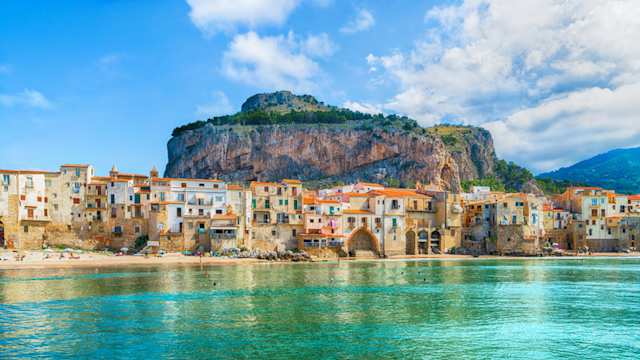
The coastal city of Cefalù
If you’ve been dreaming of slow Mediterranean summers where all you want to do is saunter between your sun lounger and the sea, then Cefalu is where those dreams can come true. For those wondering where to stay in Sicily for a seaside break, this charming little town is one of the island’s most beloved holiday destinations, and it isn’t hard to see why. It’s like something out of a postcard, where golden yellow sands are dotted with colourful sunshades, and sparkling turquoise waters gently lap at the shores.
If you are tempted to leave your recliner, the town is a joy to wander through. Narrow cobbled streets wind their way past honey-hued stone buildings. Follow the path to the impressive Arab-Norman cathedral, a fortress-like structure with gorgeous Byzantine mosaics and twin towers reaching the sky. For a gelato or a Negroni (or even both – you’re on holiday, after all), grab a seat at one of the cafes in the quaint Piazza Garibaldi.
Depending on how many Negronis you’ve downed, you may want to hike up La Rocca mountain. At 268 metres high, the trails leading up the mountain offer panoramic views of the coast. The climb is moderately challenging, but we promise it’ll be worth it for the photographs. Alternatively, skip the climb and take it easy with a visit to the Lavatoio or Medieval Laundry. This public laundry is a fascinating step back in time, a gathering place where women used to wash their clothing in a series of large basins.
Etna
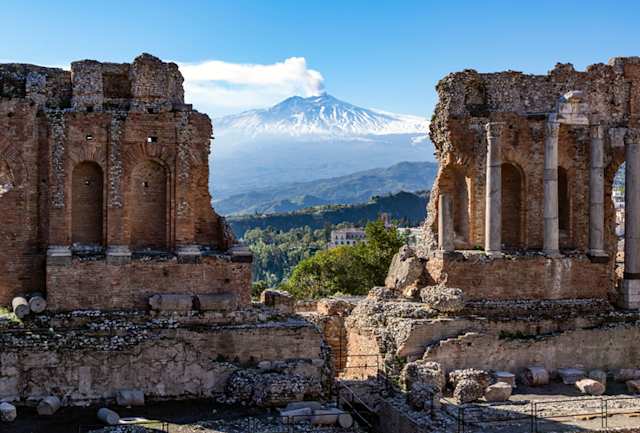
Greek amphitheater ruins in Taormina with a view towards Mount Etna
It wouldn’t be a list of where to stay in Sicily without the majestic Mount Etna. One of the most incredible natural wonders in Italy, Mount Etna should be on the itinerary for every adventure seeker out there. Tick the volcano off your bucket list with a hike along a trail that takes you past sleeping craters, lava fields and hot springs. But you don’t have to be a keen hiker to see the beauty of the mountain – there are cable cars, jeep tours and a narrow-gauge railway for those who are less mobile (or who don’t fancy the workout).
Aside from climbing the mountain, you can also explore the trails on a mountain bike, and during the winter months, you can even ski or snowboard on its slopes. The two main ski resorts are Piano Provenzano and Nicolosi, both of which offer a range of ski runs suitable for skiers and snowboarders of all levels.
If your idea of outdoor activities is wine tasting, you’ll be pleased to know that the rich and fertile volcanic soil produces some of Sicily’s finest wines, like Nerello Mascalese and Carricante. There are many local wineries that you can visit, such as Benanti Winery, which has been in business for over a century, Tenuta delle Terre Nere, which produces organic wines like their signature Etna Rosso wine, and Gambino Winery, which also has an on-site restaurant serving traditional Sicilian cuisine.
Taormina

The main square and church in Taormina, Sicily, Italy
Enjoy your very own White Lotus summer (ideally with less drama) with a stay in Taormina. This chic town set atop seaside cliffs is one of Italy’s favourite summer hotspots, and as soon as you step foot here, you’ll understand why. Its medieval streets are lined with medieval buildings like the Cathedral of San Nicola and Palazzo Duca di Santo Stéfano, as well as boutiques, alfresco cafes and restaurants. Just a quick walk through the historic centre will give you a taste of the sights, sounds and smells of traditional Sicilian life. Follow the streets to the many squares and terraces to take in the jaw-dropping views of the surrounding coastline and mountains. Piazza IX Aprile is one of the most famous in Taormina, with its chequered floor and historical churches enhancing the already-stunning views. Another favourite spot is the shaded Villa Comunale, a pretty landscaped garden where you can gaze at the town and the sea.
Had enough of gazing and can’t resist taking a dip? Head down to the selection of beaches below, where you can chill out on Spiaggia Di Mazzeo or enjoy the beauty of Isola Bella. Translating to ‘beautiful island’, what better place to spend time swimming, snorkelling, kayaking and stand-up paddleboarding?
While the coastline is one of its main draws, Taormina’s crowning glory is its ancient Greek-Roman theatre or the Teatro Antico di Taormina. Originally built in the 3rd century, the theatre has been brought back to life, and you can catch dramas, concerts, symphonies, operas, ballet performances and music festivals.
Val di Noto
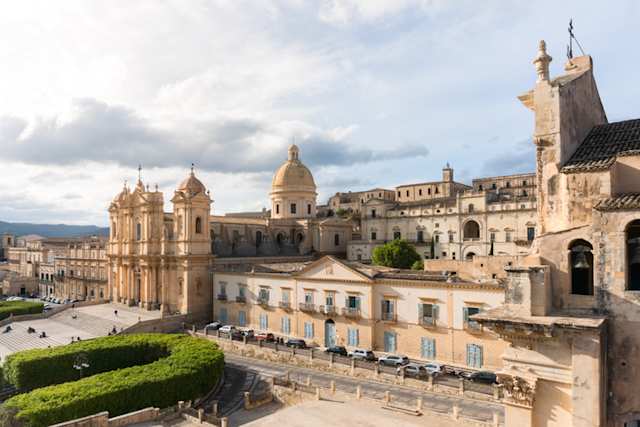
View of the Cathedral of Noto, Val di Noto, Sicily
One of Sicily’s most intriguing areas is the Val di Noto, a UNESCO World Heritage Site. This valley is best known for its eight splendid Baroque towns, one of which is Catania. Just outside Catania is Militello, which was also largely destroyed in the 1693 earthquake. It was rebuilt with Baroque-style architecture, and you can visit many art-filled churches and palaces. For more architecture, Noto is home to the majestic San Nicolò cathedral, and Scicli has many elegant palaces where you can live out your dreams as a royal.
Interior design enthusiasts will love Caltagirone, which is famous for its spectacular enamelled ceramics that decorate the town’s buildings – you’ll be amazed to know that these well-preserved ceramics pre-date Arab-Sicily. Meanwhile, foodies should head to Modica, which has a rich history of chocolate making. Pick up souvenirs from the many artisan chocolate shops, and be sure to visit the chocolate museum.
In Ragusa, relax amongst the greenery of Giardino Ibleo, a tranquil public garden dotted with fountains and sweeping views of the valley below. If you’re seeking a little bit of everything, Palazzolo offers a mix of the Val di Noto’s best features like history, architecture, tradition and modern life.
